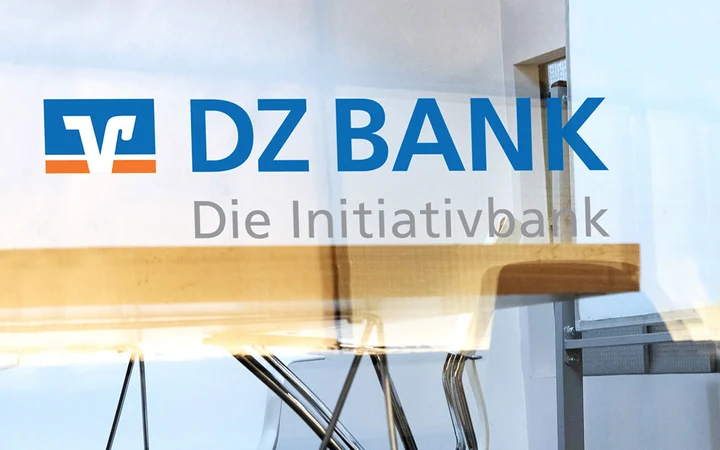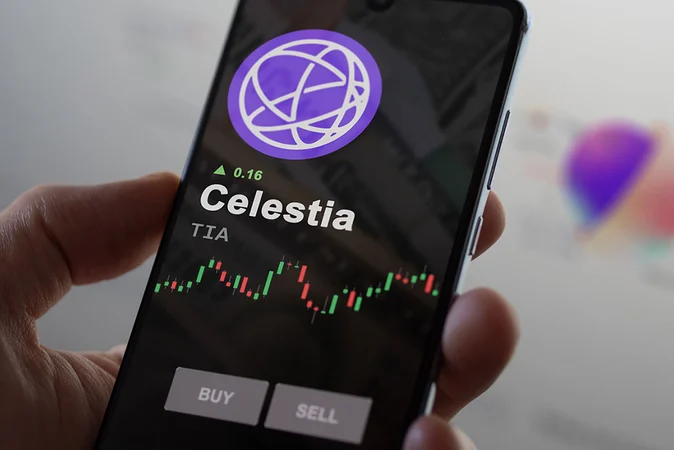BlackRock registers Ethereum Trust Is Ethereum also taking off?
BlackRock's Ethereum Trust Registered Is Ethereum Gaining Momentum?Thursday, asset management giant BlackRock once again brought Ethereum, which has been dormant for a long time, to the forefront after creating a separate surge in Bitcoin.
On November 9th, the website of the company’s Delaware department showed that BlackRock, the world’s largest asset manager, has registered the iShares Ethereum Trust. This ETF will hold ETH and directly track its underlying spot price. Subsequently, Nasdaq confirmed this news again and announced that it has submitted an application to the SEC for the BlackRock Ethereum Spot ETF “iShares Ethereum Trust”. According to its disclosure, similar to the Bitcoin ETF, the Ethereum ETF will use Coinbase as the custodian and the CME CF Ether-Dollar as the reference benchmark interest rate.
Affected by this news, the price of Ethereum soared, successfully breaking through the $2,000 level, rising nearly 10% from $1,880 to over $2,100, and then started to retrace some of the gains. As of now, it is trading at $2,111, a 24-hour increase of 11.1%. Before this year, Ethereum briefly touched this price level only in April when Shanghai upgraded.

- ARK Invest’s Robinhood Investment: A Comedy of Crypto Enthusiasm
- Hold On Tight BIS Research Report Reveals Stability Concerns with Stablecoins as Store of Value
- New Crypto Bill Gives Investors the Power to Keep Their Coins
ETH soars on positive news, Source: Forbes
The instantaneous surge in price is extremely similar to the rebound in Bitcoin that was influenced in June, when traditional institutions led by BlackRock submitted applications for Bitcoin spot ETFs. ETFs are exchange-traded financial derivatives that provide investors with a convenient way to gain exposure to assets without directly purchasing the assets themselves. Due to its convenience and the ability to bypass cumbersome barriers such as cryptocurrency wallets, this asset attribute has a strong appeal to cryptocurrency investors. After all, in the existing market, there are many institutions and retail investors who are deterred by the technical and security challenges posed by purchasing actual assets. In short, the existence of ETFs resolves two fatal flaws in the cryptocurrency market: lack of liquidity and absence of market makers.
Looking at Bitcoin, it surged by more than 20% in June. At that time, the industry generally believed that asset management companies with influence and reputation like BlackRock would not submit applications without the expectation of success. Although the U.S. Securities and Exchange Commission has not yet approved spot ETF applications for this type of asset, optimism is spreading in the market with the victories of Grayscale and Ripple in the lawsuits.
In Grayscale’s filing with the Securities and Exchange Commission (FWP), an anonymous insider claimed that Grayscale has been in contact with the Trading and Markets Division and the Corporate Finance Division of the SEC since winning the court case. Both divisions under the SEC will play a role in the formulation and approval of the company’s ETF application. In addition, according to Grayscale’s chief legal officer, there are still some matters under discussion that need to be resolved. He also pointed out that other applicants for the BTC spot ETF (including financial giants BlackRock and Fidelity) seem to be making progress in negotiations with the SEC and believe that the approval of all funds for spot ETFs is only a matter of time and not a question of whether they will be approved.

Grayscale’s prospectus for the description of spot ETF
In this context, Bitcoin has risen by 45% since June, although it rebounded and gave up all gains in October, it is now staying at a high level of around $36,000, and briefly approached the $38,000 baseline yesterday. With the strengthening of market confidence, in addition to Bitcoin, the ALT trend has also become stronger, with most coins rising more than 10% in a single week.
However, it is worth noting that even if it is quickly approved, according to the 19b-4 submitted by the BlackRock spot Ethereum ETF, the SEC has up to 240 days to decide whether to approve a product, which may extend the approval period until the autumn of next year. This also means that it will take several months for the ETF to be listed at least, and it is currently not certain whether there will be accuracy in the occurrence of “black swan” affecting the listing. In addition, the difference in regulatory status between Bitcoin and Ethereum can also lead to differences in the approval timing of the two.
Compared with the more decentralized Bitcoin, the nature of Ethereum as a security is more obvious, especially after its transition to proof-of-stake. In the views of regulatory parties, almost all relevant parties including the U.S. Securities and Exchange Commission agree that Bitcoin is not a security and does not fall within its jurisdiction, but there is still hesitation about the qualitative nature of Ethereum.
In fact, Gary Gensler, chairman of the U.S. Securities and Exchange Commission, has been ambiguous about this issue many times, including during the debate with Patrick McHenry (R-NC), Chairman of the House Financial Services Committee, on whether he believes Ether is a security. But what is subtle is that in any lawsuits filed by the U.S. Securities and Exchange Commission against exchanges such as Coinbase or Binance, Ethereum has not been listed as an unregistered security, and the industry is constantly discussing this.
Although the difference in nature may not directly determine whether Ethereum can be included in the ETF, the debate surrounding this nature will still prolong the process. If exchanges delist tokens due to regulatory reasons in the future, it will directly affect global liquidity and exacerbate market fragility. On the other hand, the SEC also hopes to have a more comprehensive demonstrated sample of trading conditions for spot Bitcoin ETFs before approving products that track other assets. Taking all factors into account, Ethereum has experienced growth in the short term under emotional stimulation, but if there is no substantial positive news in the future, Ethereum’s price may continue its stagnant development.
And from the analysis of Ethereum itself, its fundamentals are not as strong as Bitcoin.
As we all know, Ethereum is a huge ecology in the encrypted market and is also a platform economy oriented towards applications. From this perspective, the value of Ethereum is more like an internet giant in the platform economy, with certain hedging properties and a certain degree of growth, more like a blue-chip stock with a high dividend yield. However, Bitcoin is different, as a digital independent belief, as digital gold, Bitcoin has a strong value benchmark and consensus, making it more resilient to risk assets and highly correlated with other investment products such as US stocks and US bonds. In this context, the short-term hybrid model valuation of Ethereum has been validated, outperforming Bitcoin, but in the long run, it lacks scarcity and its hedging properties are not as good as Bitcoin.

Ethereum’s growth compared to BTC, SOL, and BNB, source: Forbes
After Ethereum switched to Proof of Stake (POS), its ecological application became more prominent, but its narrative attribute gradually decreased. Especially in this year’s bear market, besides the attention given to the Shanghai upgrade, Ethereum has no other narrative. The Cancun upgrade is still a year away. On the other hand, its growth potential has gradually decreased, and the competition among public chains is particularly fierce. This year, its price growth performance even lags behind tokens like Solana’s SOL or Binance’s BNB.
The actual situation and analysis are consistent. Apart from briefly surpassing Bitcoin in growth, with the rise of spot Bitcoin ETFs, the script was reversed in 2023. Investors generally consider Bitcoin as a typical investment target in the cryptocurrency field. Ethereum clearly lags behind BTC in terms of price, and its core fundamentals such as network usage and active participants have not changed much in a year.
In summary, considering various factors, Ethereum’s performance this year is not outstanding. Although it has started to rise slightly under the influence of Bitcoin, its actual volatility per month is at its lowest level in nearly five years. Even in the current bull market, Ethereum’s implied volatility (expectation of future volatility) lags behind Bitcoin.

Ethereum’s volatility compared to Bitcoin, source: Glassnode
Nevertheless, Ethereum’s growth still conveys positive signals to the market. Besides BlackRock, other asset management companies such as Grayscale, Ark Invest, ProShares, and Valkyrie have all submitted applications for Ethereum spot ETFs. Its futures ETF has already become well-established and mature, which is crucial for the entry of subsequent funds.

Display of some Ethereum futures ETFs, source: Forbes
Now turning back to Bitcoin, under various positive sentiments, the number of long-term holders of BTC is steadily increasing. As of November 9, over 14,837,982 BTC have not changed addresses in at least five months, accounting for 75.95% of the total circulation. Small-scale holders are also gradually entering the market. According to @Phyrex_N’s data, the proportion of small-scale investors holding less than 10 BTC has increased by 0.027% in the past week, indicating strong accumulation.
In the early hours of today, Bitcoin experienced another unusual movement. Bloomberg analyst James speculated on X that due to GreyScale winning the lawsuit, the SEC may open a special review window for BTC spot ETFs led by BlackRock from November 8th to 17th. Although the speculation has not been confirmed, BTC has once again surpassed $37,000 influenced by this sentiment.
It may seem like everything is going well, but there are also other voices coming from the market.
Morgan Stanley’s head of analysis, Nikolaos LianGuainigirtzoglou, publicly stated, “The rally in cryptocurrencies seems somewhat excessive.” In his analysis, he pointed out that the target holders of ETFs highly overlap with existing investors, so the entry of new funds needs further observation. This is evident in regions such as Europe and Canada, where the performance of Bitcoin spot ETFs remains lackluster. He also discussed the impact of Ripple’s victory and Grayscale’s success, noting that the extent of regulatory relaxation is still unclear.
In addition, Morgan Stanley also questions the positive impact of the halving event next year, believing that this event has already been priced in the fluctuations of BTC this year. It is particularly important to be cautious of sell-offs after false news drives up prices.
We will continue to update Blocking; if you have any questions or suggestions, please contact us!
Was this article helpful?
93 out of 132 found this helpful
Related articles
- Impossible to prevent Analysis of the fake Skype App phishing
- Ukraine’s Crypto Misfortune: A $49 Billion Comedy of Regulatory Errors
- UBS Group AG Takes a Leap into Crypto ETFs, Hong Kong Paves the Way
- BlackRock iShares Ethereum Trust Takes Delaware by Storm!
- Ripple and RocketFuel: The Dynamic Duo
- SEC Chair Prompts FTX Reboot, FTT Token Rallies
- MuesliSwap Shakes Things Up with a Refund Site for Crypto Losses



